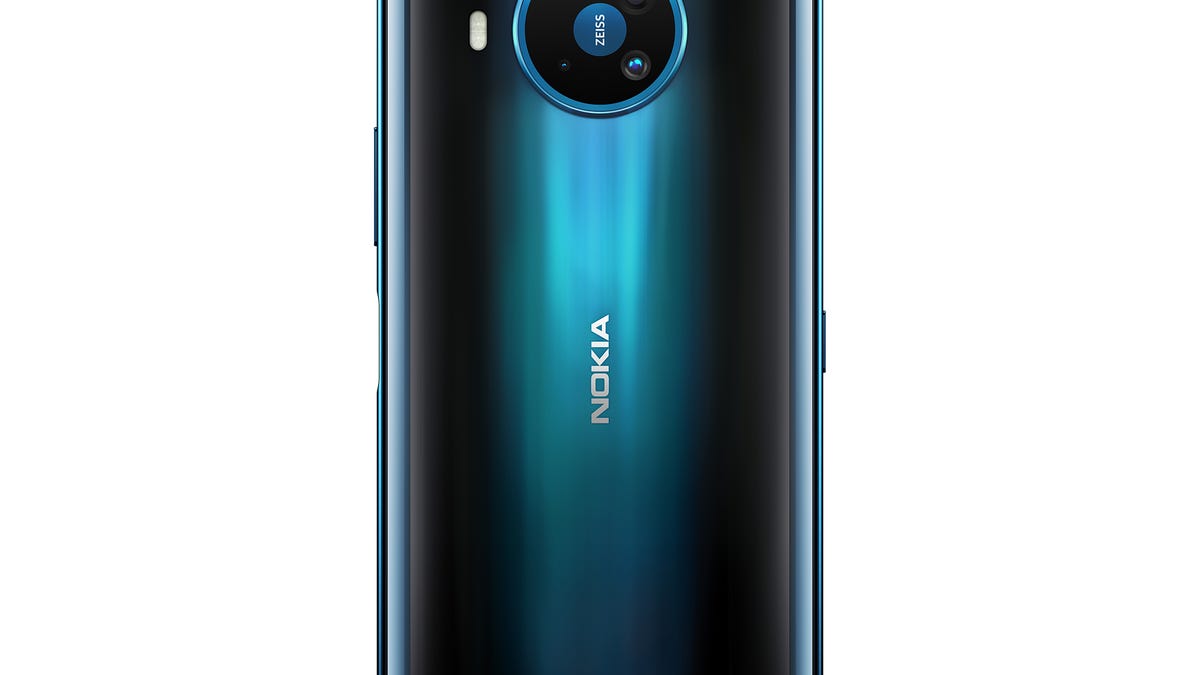The Nokia 8.3 is the 'first global 5G phone.' Here's what that means for you
Roaming with 5G is finally here.

The first wave of 5G phones have been on sale now for well over a year. That means HMD, which makes Nokia phones, is late to the party -- but oh, what an entrance it's making.
The company announced the Nokia 8.3, its first 5G device, at a virtual launch event from London on Thursday, after the original MWC launch was delayed because of the coronavirus. The headline feature of the phone is its "global 5G" capabilities, which mean you'll be able to roam on 5G as you travel abroad -- something we've yet to see from other phone makers.
At Thursday's event, HMD promised that the Nokia 8.3 will offer the widest range of compatibility with different 5G networks around the world, while being half the price of the 5G devices offering less wide-ranging compatibility.
"The 5G solution that we have here is something really robust and something we're very proud of," said HMD Chief Product Officer Juho Sarvikas in a briefing ahead of the event. He explained that HMD had purposefully designed the Nokia 8.3 to be forward-compatible with future 5G networks.
This means that unlike with many of the early 5G devices released last year, you won't have to worry about your 5G phone working on networks abroad, or even on your own carrier's network as it starts to take advantage of different radio frequency bands.
Carriers in the US have largely built their 5G networks on mmWave, which are high-band radio frequencies, while carriers in Europe have chosen to go with low- and midband frequencies, often called Sub-6. Sub-6 and mmWave each offer different benefits, so over time carriers across the world will be looking to incorporate more bands from both into their offerings.
In the meantime, to use a 5G phone with a 5G network, that phone must support the correct bands. Most 5G phones currently on the market support only a small number of those bands, but this is where HMD says the Nokia 8.3 stands out.
According to Sarvikas, the phone supports all bands from 600MHz through to 3.8GHz, which HMD believes to be the largest range of 5G bands currently supported by any phone. This will mean that if you're a UK 5G user, you'll still be able to connect to 5G networks if you go to a rural area of the country, or if you visit the US.
HMD has achieved this by incorporating Qualcomm's 5G RF Front end module solution coupled with the Snapdragon 765G chipset, which it announced last December, into the Nokia 8.3. This is the first of Qualcomm's processors to combine the brains of the phone with the 5G modem in one integrated module, and it's specifically designed for midrange 5G phones.
Other phone makers already have access to the individual components included on the Snapdragon 765G, but on the Nokia 8.3 we're seeing them used as one integrated platform, said Enrico Salvatori, SVP and president of Qualcomm Europe, in an interview. "The device they [HMD] are launching today is the first device using this technology with this approach," he said.
According to Sarvikas, he also expects the Nokia 8.3 to be 40% faster on critical 5G bands than the competition using the Snapdragon 765 platform, due to the phone's dynamic spectrum-sharing capabilities (which allow the phone to work on 4G and 5G on the same band, transitioning between the two seamlessly).
It's definitely a unique approach to 5G, but it might not stay that way for long, according to CCS Insight analyst Ben Wood.
"HMD Global has worked hard to have a strong marketing message around its 5G phone, and the comprehensive support for multiple bands and other features such as dynamic spectrum sharing is impressive, but this is no guarantee of success," said Wood. "All other Qualcomm licensees have access to these technologies, so the window of opportunity will close quickly."
Then, Wood added, there's the problem of the price. At 599 euros ($650, £550 or AU$1,110), the Nokia 8.3 is definitely more affordable than high-end 5G phones such as the Samsung Galaxy S20. But then you compare it with a rival product such as the RealMe X50 Pro, which uses Qualcomm's top-of-the-line Snapdragon 865 platform and is the same price as the Nokia 8.3, and it suddenly doesn't look so "punchy," he said.
The likelihood is that as time goes on and 5G becomes increasingly widespread, "global 5G" will become the new normal for phones. But until then, we'll be looking to Nokia phones to show us exactly what the experience of roaming on this next-generation network technology looks like.

